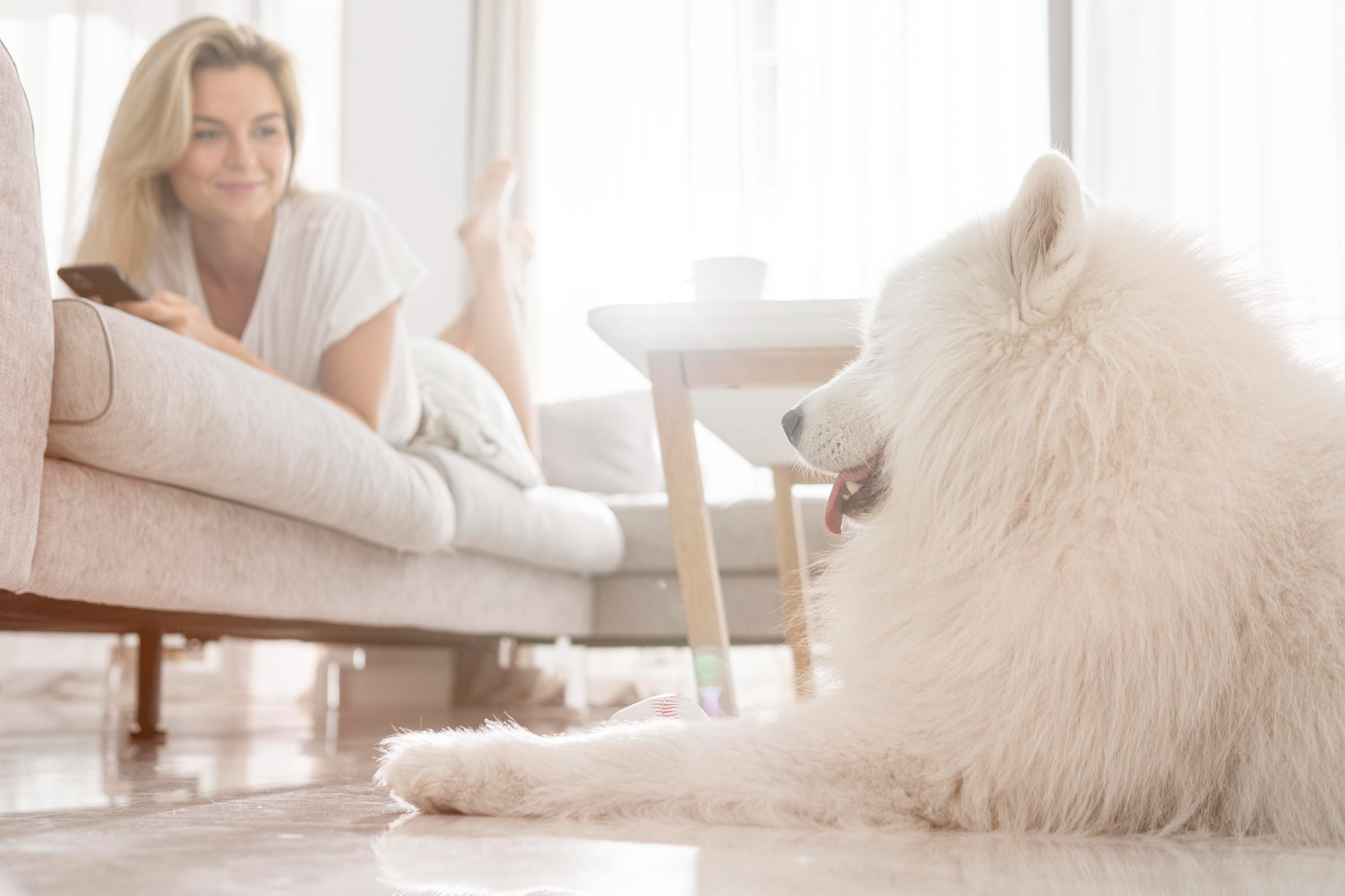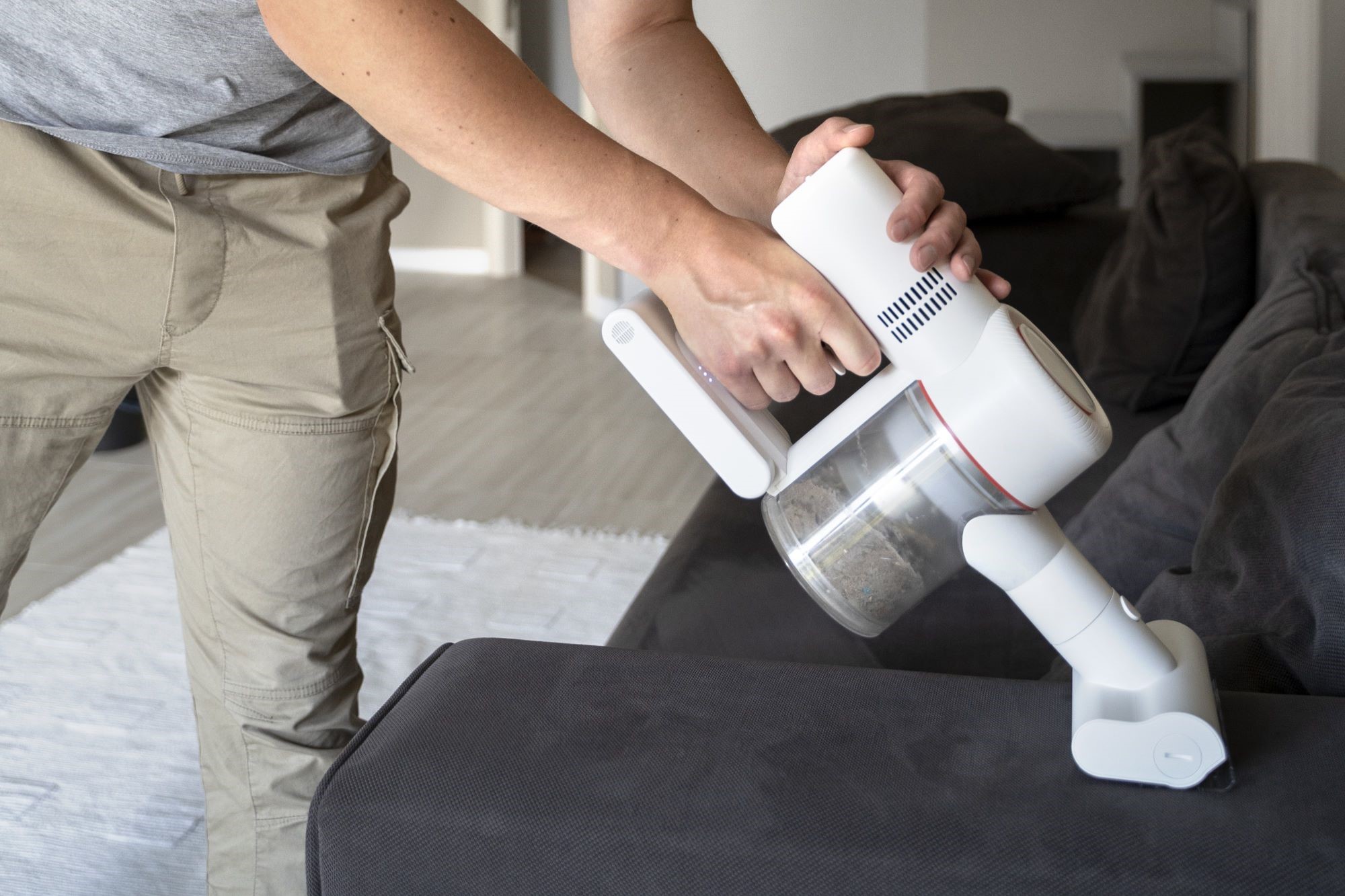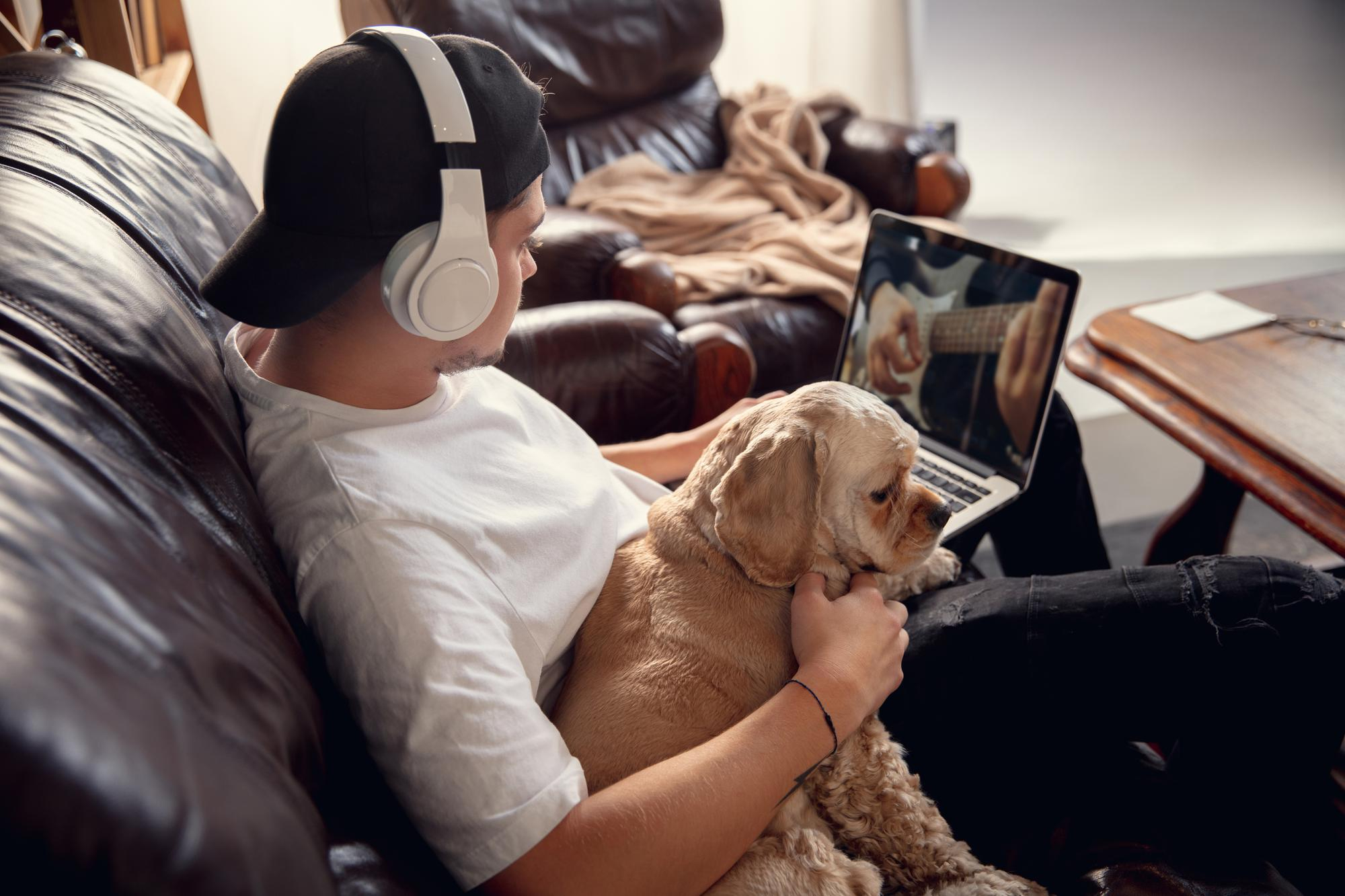If you’re a cat owner, you’re probably familiar with the never-ending battle against cat hair. Those fluffy clumps seem to have a mind of their own, attaching themselves to every surface, especially your beloved furniture. But don’t worry! We’ve got a comprehensive guide to help you tackle the feline fur problem with ease. From using lint rollers to exploring the benefits of couch slipcovers, let’s dive into the world of cat hair removal and keep your home looking spotless!
Understanding the Cat Hair Dilemma
Why is Cat Hair Everywhere?
Cats shed. It’s as simple as that. Their hair naturally falls out as part of their grooming process. While shedding is a normal part of a cat’s life, it becomes a problem when that hair ends up on your furniture, clothes, and everywhere else in your home. Cats typically shed more in the spring and fall, when their coats are adjusting to seasonal changes. This means you’ll see a higher volume of hair during these periods.
Types of Cat Hair
Not all cat hair is created equal. Here are a few types you might encounter:
| Type of Hair | Description | Challenges |
| Fine Hair | Soft and more likely to cling to fabrics. | Can be quite challenging to remove due to its tendency to embed itself in the fibers of your furniture. |
| Coarse Hair | Thicker and stiffer, less likely to embed deeply. | Can be tougher to remove and may be more visible on furniture surfaces. |
| Undercoat Hair | Soft, downy fur shed in large quantities, especially in shedding seasons. | Particularly challenging as it’s designed to be insulating and can become trapped in fabric. |
This table summarizes the different types of cat hair, their descriptions, and the challenges associated with each type.
Tools and Techniques for Removing Cat Hair
Lint Rollers: Your Best Friend
Lint rollers are a classic choice for a reason. They’re easy to use and very effective. Just roll it over the surface, and watch the hair stick to the sticky sheets. Lint rollers are especially handy for quickly cleaning up hair from smaller areas or on the go.
How to Use a Lint Roller:
- Unroll the Sheet: Start by peeling off a layer of the sticky sheet. Most lint rollers have a plastic cover to protect the sheets when not in use.
- Roll Over the Surface: Apply gentle pressure and roll the tool over your furniture. Move the roller in one direction to avoid pushing the hair further into the fabric.
- Dispose of the Sheet: Once it’s full, tear it off and replace it with a new one. For large areas, you may need several sheets.
Vacuum Cleaners: Power at Your Fingertips
Vacuum cleaners equipped with upholstery attachments can be a game-changer. They’re designed to reach deep into fabrics and remove hair effectively. Many modern vacuums come with specialized attachments for pet hair, which can significantly improve cleaning efficiency.
Vacuum Cleaner Tips:
- Use the Right Attachment: Choose a brush or upholstery attachment for best results. Brush attachments help loosen hair from fabric, while upholstery attachments can remove it more effectively.
- Vacuum Regularly: Make it a habit to vacuum your furniture once a week. For homes with multiple cats or heavy shedding, you might need to vacuum more frequently.
Rubber Gloves: An Unexpected Solution
Rubber gloves might seem odd, but they’re surprisingly effective. The rubber’s texture helps lift hair from fabric. This method is particularly useful for cleaning areas where hair has become deeply embedded.
Using Rubber Gloves:
- Wet the Gloves: Slightly dampen them with water. This helps to create friction and makes the rubber more effective at picking up hair.
- Rub the Surface: Run your hands over the furniture in a sweeping motion. The rubber will help to lift and clump the hair, making it easier to remove.
- Rinse and Repeat: Rinse off the hair from the gloves and repeat as necessary. The collected hair can be easily disposed of, and the gloves can be washed and reused.
Fabric Shavers: For the Upholstery Experts
Fabric shavers, or lint shavers, are designed to remove fuzz and hair from fabric surfaces. They’re particularly useful for larger pieces of furniture or for fabrics that are prone to pilling.
Using a Fabric Shaver:
- Turn on the Device: Make sure it’s set to the appropriate setting for your fabric type. Most shavers have adjustable settings for different types of material.
- Gently Shave the Fabric: Move the shaver in a slow, sweeping motion. Avoid pressing too hard, as this can damage the fabric.
- Empty the Collection Bin: Dispose of the collected hair regularly. Most fabric shavers come with a small bin to catch the hair, which should be emptied frequently.
Pet Hair Removal Tools: Purpose-Built for the Job
Specialized pet hair removal tools are available, and they can be highly effective. These tools are designed to tackle pet hair with various brush and comb designs. They can be particularly useful for homes with multiple pets or for removing hair from different types of surfaces.
Types of Pet Hair Removal Tools:
- Rubber Brushes: These have a rubber surface that attracts and holds hair. They work well on various types of fabric and can be used to brush both furniture and pets.
- Slicker Brushes: Ideal for removing hair from fabric surfaces. They have fine, closely spaced bristles that can help remove hair from tight spaces.
DIY Solutions for Cat Hair Removal
Vinegar and Water Solution
A vinegar and water solution can help loosen cat hair from furniture. The vinegar acts as a natural fabric softener, making hair removal easier. This solution is also safe and non-toxic, making it a great option for households with pets and children.
How to Make the Solution:
- Mix the Solution: Combine equal parts of vinegar and water in a spray bottle. For extra cleaning power, you can add a few drops of essential oil.
- Spray the Surface: Lightly mist the furniture with the solution. Avoid soaking the fabric, as excess moisture can damage certain materials.
- Wipe with a Cloth: Use a microfiber cloth to wipe away the hair. The hair should come off more easily due to the fabric softener effect of the vinegar.
Baking Soda: The Deodorizer and Hair Remover
Baking soda isn’t just for baking! It can help lift cat hair and neutralize odors. This method is particularly useful for eliminating odors associated with pet hair.
Using Baking Soda:
- Sprinkle on the Furniture: Lightly cover the surface with baking soda. For larger areas, you may want to use a sifter or shaker to ensure even coverage.
- Let it Sit: Allow it to sit for 15-20 minutes. This gives the baking soda time to work on lifting the hair and neutralizing any odors.
- Vacuum: Use a vacuum cleaner to remove the baking soda and hair. Make sure to thoroughly vacuum to ensure that all the baking soda and hair are removed.
Homemade Cat Hair Removal Mitt
You can create a homemade mitt using a few basic materials. This can be particularly useful for large areas or for cleaning hard-to-reach places.
How to Make a Mitt:
- Get a Pair of Gloves: Use an old pair of rubber or latex gloves. These can be found in most households or purchased inexpensively.
- Attach Fabric: Glue a piece of fabric or felt to the gloves. The fabric should be sturdy and able to hold up to repeated use.
- Use the Mitt: Rub it over the furniture to collect hair. The fabric will help to trap the hair, making it easier to remove.
Preventing Cat Hair Build-Up
Regular Grooming
Regular grooming is essential to reducing shedding and minimizing the amount of hair that ends up on your furniture. Brushing your cat frequently helps to remove loose hair before it can shed into your home environment. This not only keeps your furniture cleaner but also contributes to your cat’s overall health by preventing matting and hairballs. Use a variety of grooming tools such as brushes, combs, and deshedding tools to address different coat types and needs. For instance, slicker brushes are excellent for long-haired cats, as they can remove tangles and loose hair effectively. Short-haired cats benefit from rubber brushes or grooming mitts, which help to lift and collect loose hair from their coats.
Use Furniture Covers
Furniture covers are a practical solution to protect your furniture from cat hair. They create a barrier between your cat and your upholstery, catching hair before it embeds into the fabric. Opt for washable covers that are easy to clean and can be swapped out regularly. Slipcovers, throws, and specially designed pet covers are available in various materials and styles. Choose covers that fit well and are secured to prevent shifting or bunching, which can make them less effective at catching hair. Regularly laundering these covers ensures they remain effective and helps to maintain a clean appearance for your furniture.
Invest in a Pet-Friendly Vacuum Cleaner
A pet-friendly vacuum cleaner is designed specifically to handle pet hair and dander more effectively than standard models. Look for vacuums with strong suction power, as this ensures effective hair removal from various surfaces including carpets, upholstery, and hard floors. Specialized attachments, such as brushes or crevice tools, can help clean upholstery and tight spaces more thoroughly. Additionally, some vacuums come equipped with HEPA filters, which are crucial for trapping allergens and improving indoor air quality. Investing in a high-quality vacuum cleaner with these features can significantly reduce the amount of cat hair in your home and help maintain a healthier living environment.
Cleaning Cat Hair from Specific Types of Furniture
Sofas and Couches
Sofas and couches are notorious for attracting cat hair. Here’s how to keep them clean:
Cleaning Tips:
- Use a Fabric Brush: Regularly brush the upholstery to loosen hair.
- Vacuum Thoroughly: Use an upholstery attachment to get into crevices. Move the vacuum slowly and methodically to ensure you pick up all the hair. For stubborn hair, consider using a vacuum with strong suction and a rotating brush.
Additional Tips:
- Spot Clean Stains: If your cat has accidents or spills occur, spot clean stains promptly to prevent them from setting. Use a fabric cleaner that’s safe for your upholstery.
- Rotate Cushions: If possible, rotate and flip cushions regularly to distribute wear and prevent hair from embedding in one spot.
Leather Furniture
Leather furniture can be easier to clean than fabric, but it still requires regular maintenance to keep it looking its best.
Cleaning Leather:
- Dampen a Cloth: Use a soft, damp cloth to wipe the surface. Be careful not to use too much water, as excess moisture can damage leather.
- Dry Thoroughly: Follow up with a dry cloth to remove any remaining moisture. Leather should be left to air dry naturally.
- Condition Regularly: Use a leather conditioner to keep the leather supple and prevent it from cracking.
Additional Tips:
- Avoid Harsh Chemicals: Steer clear of harsh cleaning agents that can damage the leather. Stick to products specifically designed for leather care.
- Protect from Sunlight: Keep leather furniture out of direct sunlight to prevent fading and drying out.
Wooden Furniture
Wooden furniture is less prone to hair buildup but can still collect some. Regular cleaning can help maintain its appearance.
Cleaning Wooden Furniture:
- Use a Dry Cloth or Duster: A dry cloth or feather duster is usually sufficient for removing loose hair. Gently wipe the surface to avoid scratching.
- Polish as Needed: Use a wood polish or furniture wax to keep the wood looking shiny and to create a barrier that can help prevent hair from sticking.
Additional Tips:
- Clean Crevices: Pay attention to crevices and corners where hair can accumulate. Use a small brush or vacuum attachment to reach these areas.
- Protective Coatings: Consider applying a protective coating to the wood to make cleaning easier and to protect the finish.
Maintaining a Hair-Free Home
Routine Cleaning Schedule
Establishing a regular cleaning routine can help keep cat hair under control and prevent it from becoming overwhelming. Daily, brush your cat to reduce shedding and remove hair from high-traffic areas. Weekly, vacuum furniture, clean floors, and launder any removable covers or cushions. Monthly, deep clean upholstery and other fabric surfaces using specialized tools or professional services if necessary.
Use Air Purifiers
Air purifiers with HEPA filters can help capture pet hair and dander from the air, improving overall air quality in your home. Choose an air purifier with a HEPA filter for maximum efficiency and place it strategically in high-traffic areas or rooms where your cat spends a lot of time.
Consider Cat-Friendly Fabrics
When selecting new furniture or fabrics, consider options that are less likely to attract or hold pet hair. Microfiber repels hair and is easy to clean. Leather or faux leather materials are less likely to trap hair and are easier to wipe clean. Tightly woven fabrics are less likely to snag or hold hair.
Pet Hair Removal Products
Explore a variety of pet hair removal products available on the market. Pet hair remover brushes are useful for both furniture and pet grooming. Lint rollers are convenient for quick clean-ups. Vacuum attachments are specialized for upholstery and car interiors.




